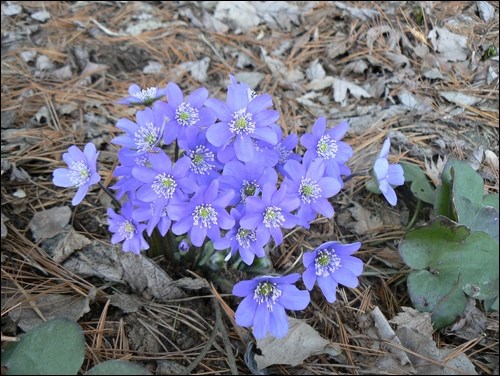Tough and dependable are admirable traits in people as well as plants. These perennials have stood the test of time not just in my gardens but likely your grandmother’s as well. And with some of these perennials, breeders have outdone themselves by introducing new colours, flower forms (e.g. doubles) and sizes.
Gasplant (Dictamnus albus) is not for those who demand instant gratification. It almost always looks wimpy and terrible on a garden centre bench, but baby it along and don’t over water it and you’ll be well rewarded in a couple of years’ time. Three by three feet, it has glossy attractive foliage with either pink or white flowers. Plant in full sun and well drained soil. Those with sensitive skin should avoid touching the foliage on hot summer days as it can irritate, causing even painful, burn-like blisters. If you light a match near the flowers in hot weather, these same compounds will cause a brief blue flame to erupt.
Boris avens (Geum borisii) may be a bit difficult to source, but is worth the search. It has attractive dark green foliage and bright orange flowers. About 12 inches tall, it is ideal for a “hot” border or a rock garden. Place in full sun in well-drained soil. Note: a “hot” border includes plants with cream, yellow, orange, bronze or red flowers.
Daylilies (Hemerocallis spp. and hybrids) have been in prairie gardens since before the First World War, but have come a long way in recent decades, with plant breeders developing shorter plants (suitable for smaller landscapes), ruffles, recurved petals, and a wider range of colours as well as reblooming varieties. There are never too many daylilies in a border. Plant in partial to full sun in organic, well-drained soil.
Hepaticas (Hepatica nobilis and H. transsylvanica) are one of the earliest flowers of spring. (The common name is liverleaf, after the shape of the leaves, but if I had a daughter I would rather call her Hepatica than Liverleaf.) They are available in blue, white and pink. The flowers arise over the previous season’s dead foliage and are truly stunning. They are followed by a fresh clump of bright green foliage of about four inches in height for the remainder of the growing season. Plant in shade in well-drained but evenly-moist, organic soil.
Hostas (Hosta spp. and hybrids), grown primarily for their foliage, have been around “forever” and new cultivars become available every year. They range from three inches tall to over three feet, with green, grey, blue and white and cream variegated leaves. They do best in shade with organic, evenly moist soil.
Iris (Iris spp.) are quite variable in terms of their hardiness and longevity in prairie gardens. Among the bearded or German iris (I. germanica), the best are those classified as “dwarf” or “intermediate.” While the size of the plants and their flowers may not be as large, they will be with you for many years. Flowers are in all colours of the rainbow while the foliage is upright and sword-like. Place in full sun in well-drained soil. Once established, they are quite drought-tolerant.
Siberian iris (Iris sibirica) is similar in form to the standard German iris, some cultivars reaching as high as three feet but with narrower, grass-like leaves and smaller, beardless flowers. There is a wide range of available colours. Less drought-tolerant than German iris, these require full sun and even moisture.
Peony (Paeonia spp. and hybrids) is another perennial that you can expect to be with you for 60 years or longer. They have lovely shiny foliage on plants about three feet by three feet and flowers in white, pink, red, magenta and yellow. Place in full sun on well-drained soil. They are very drought-tolerant once established. Nosegay and Bowl of Beauty are favourites.
Williams will be discussing more of her favourite perennials in her workshop, “Perennials: The Enduring and the Fleeting” during the University of Saskatchewan Hortweek in July, 2016. For this full program of more than 30 classes and workshops on a wide range of gardening topics (some of them free), go to https://ccde.usask.ca/gardening/hortweek
— This column is provided courtesy of the Saskatchewan Perennial Society (www.saskperennial.ca; [email protected]; www.facebook.com/saskperennial). Check out our Bulletin Board or Calendar for upcoming garden information sessions, workshops and tours.




